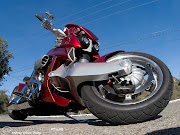
Review Mud Tires - Read Mud Tire Reviews and Post Your Own Review of your Mud Tires Mud Terrain MT and AT (All Terrain) Tires.
As mud varies, some tips help to address certain conditions. For instance slick mud with a hard bottom layer is best attacked with a narrow mud tires since a narrow mud terrain tire can cut through the top layer to find traction on the hard surface below. When a wide mud terrain tires encounters the same mud in this situation, it tend to float or "hydroplane" on the slick top layer without reaching the hard surface below.
A wider mud tire tends to do better in the thicker, cement-like mud especially when the terrain varies below the surface. It is this mud that wider mud tires will provide some flotation, much like driving in sand. Wider tires also benefit from lowering the tire pressures providing a larger contact patch and conforming over the uneven terrain. How much you air down depends on the size of the tire and the stiffness of your sidewall. Common air-down recommendations for mud and the average mud tires is to lower tire pressures down to about 15 to 20 PSI.
Another mud tire mud tip deals with the tread pattern of your tire. Mud tires by definition are tires that have a larger lug and wider and deeper space (voids) between lugs. In mud, these wider, deeper voids should be designed to channel mud out of the tread and self-clean the lugs so that as they spin through the mud, the lugs come down clear of mud giving them better traction for the next rotation. With good mud characteristics mud tires generally grab onto anything it can hook one of its lug edges around, especially when aired down and channel the mud away from the center. Tread designs typically are what make or break a mud tire and vary widely from manufacturer to manufacturer. If a tire is not well designed for mud, it may not self clean and will become clogged and packed with mud in the voids, essentially making them a slick, flat tire with next to zero traction. Tires that are more designed for street rather than mud are usually designed to place a larger patch of rubber on the road and a quieter ride at highway speeds with closer spaces between lugs. These road specific characteristics are more prone to clogging and have a significant disadvantage in the mud but actually benefit in sand where they tend not to "dig". Mud tires that have been designed specifically to perform well in mud tend to handle worse and have a higher noise level on paved surfaces where there is less of a contact patch on the road and typically a lack of "sipes" that aid traction.










Tidak ada komentar:
Posting Komentar